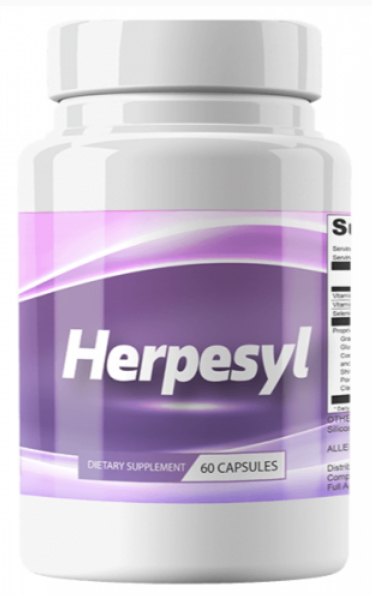Epstein-Barr is one of the eight known herpes virus strains. It’s also referred to as human herpesvirus 4. Epstein- Barr, despite not being as well-known as other herpes virus strains, is actually one of the most common viruses that infects humans.

Which diseases does Epstein-Barr cause?
Epstein-Barr virus is the most common cause of mono (infectious mononucleosis). It’s a relatively benign disease that causes minor symptoms such as fever, sore throat, enlarged lymph nodes in the neck, as well as fatigue. Mono usually resolves on its own within a few weeks, although the fatigue may persist. Very rarely, mono may cause the liver or spleen to become swollen. In fewer than a single percent of these cases the spleen may rapture.
Besides mononucleosis, the Epstein-Barr virus has also been linked to some forms of cancers, including:
- Hodgkin’s lymphoma
- Burkitt’s lymphoma
- gastric cancer
- nasopharyngeal carcinoma.
It has also been linked to some HIV-related conditions such as hairy leukoplakia and central nervous system lymphomas.
There is also some evidence that the EB-virus may put a person at a higher risk for autoimmune diseases. These are conditions that cause the body to have abnormal responses against itself.
What autoimmune diseases can Epstein-Barr cause?
The EB-virus may be linked to particular autoimmune diseases such as:
- dermatomyositis
- systemic lupus erythematosus
- rheumatoid arthritis
- Sjögren’s syndrome
- multiple sclerosis.
An infection with the EB-virus has been linked to additional diseases including:
- Gianotti–Crosti syndrome
- erythema multiforme
- and acute genital ulcers.
Also, hypersensitivity to mosquito bites may also be linked to an EB-virus infection.
How does Epstein-Barr spread?
Epstein-Barr is a communicable virus, meaning it infects a person when saliva or fluids are transferred between two or more people. This is why the virus is commonly known as the “kissing disease”.
For most people, an infection with the EB-virus will simply go unnoticed. Once infected, the body will adapt to its presence in the body and build immunity to it. This means that only the initial contact with the virus may present with some of the symptoms of infection with the virus.
However, if the person becomes re-infected with the virus on another occasion; the body will have already been exposed to and accustomed to the virus and will not react to its re-introduction into the body.
Epstein-Bar Statistics and Risk Factors
While Epstein-Barr seems indiscriminate when selecting hosts, the virus is more commonly found in white Americans than the Black population of the same nationality. The EB-virus also features prominently among females, those living in tropical countries as well as being sexually active.
Most people in developed countries are not exposed to the virus by the age of five. In the United States alone, only approximately 50 percent of all five-year-old children show evidence of previous infection as opposed to about 90 percent of American adults that show evidence of previous infection with the EB-virus.
In 35-50 percent of cases, EB-virus infection that occurs during adolescence years causes Infectious Mononucleosis, while infection in childhood hardly presents any symptoms or presents as any of the common, miscellaneous benign childhood illnesses.
Infants are protected from the EB-virus while the maternal antibodies are still active; it is once these temporary protective, immunoglobulin proteins from the mother have disappeared through natural processes that an infant becomes susceptible to infection by the virus.
Signs and Symptoms of Epstein-Barr
The signs and symptoms of infection with the Epstein-Barr virus are relatively subtle. This is especially true when infection occurs during childhood. Some symptoms that may present include:
Epstein-Barr Symptoms in Children:
- Nausea
- Vomiting
- Diarrhea
- Fever
- Malaise
Epstein-Barr Symptoms in Adults and Adolescents:
- Onset of Infectious Mononucleosis
- Fatigue
- Inflamed Lymph Nodes in the neck
- Inflamed throat
- Fever
- Swollen spleen and/or liver
- Rash
Epstein-Barr Treatment
Epstein-Barr is a virus and cannot therefore, be treated with antibiotics. The body will simply build immunity to the virus over time. Symptoms of EB-virus infection will usually subside spontaneously within 2 to 6 weeks.
Epstein-Barr virus infection can be treated by a primary-care provider such as a family practitioner, a pediatrician or may even be referred to an infectious-disease specialist or an immunologist in the case that symptoms become chronic.
It is always advisable to consult with a doctor or a medical professional in the event of illness. Together with this, adopting some healthy lifestyle habits such as exercise, following a good diet plan, drinking plenty of water and eliminating harmful substances such as alcohol, cigarettes or drugs may help to alleviate feelings of malaise and being less susceptible to infection or severe complications.
References
- Spectrum of Epstein–Barr virus-related diseases: a pictorial review. [link]
- Oral manifestations in the era of HAART. [link]
- Epstein–Barr virus in autoimmune diseases. [link]
- Autoimmune disease: A role for new anti-viral therapies? [link]
- CD8+ T-Cell Deficiency, Epstein–Barr Virus Infection, Vitamin D Deficiency, and Steps to Autoimmunity: A Unifying Hypothesis. [link]
- Epstein–Barr virus infection and multiple sclerosis: a review.” [link]
- About 90% of adults have antibodies that show that they have a current or past EBV infection. (CDC)
- Reactivation of Epstein–Barr virus from latency. [link]
- Epstein–Barr Virus and Infectious Mononucleosis. (CDC)








